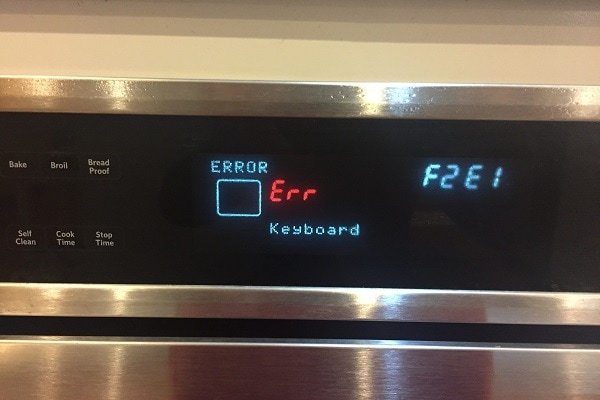
Now, if you’re like most people, seeing any error code might feel like your appliance is speaking a foreign language. The “LE” code specifically relates to a lock error. Just think of it as a lock on your smartphone or computer—if there’s a glitch, it can prevent you from accessing what you need. In this case, the “LE” error signals a problem with the door lock mechanism. This is crucial because the oven’s door needs to be securely closed and latched to ensure proper and safe operation. Without this, you’re not just dealing with inconvenience but also potential safety risks.
Understanding the “LE” Error Code
So, what exactly is happening with the “LE” error code? Essentially, this code indicates that the oven’s door lock mechanism isn’t functioning correctly. Picture this: when you’re in a hurry to bake a cake, you shut the oven door, and instead of the “preheat” light coming on, you see “LE.” Annoying, right? This error could be as simple as an obstructed door latch or as tricky as a faulty lock motor or switch.
To put it simply, the lock mechanism in your oven is designed to ensure that the door stays tightly closed, especially during the self-cleaning cycle when temperatures soar. If the lock fails, the oven’s computer blocks use, ensuring you don’t inadvertently run the oven with the door ajar. This might seem like a small hitch, but it’s a crucial safety feature. So, when this lock doesn’t work as expected, the system reacts by displaying the “LE” error code as a safeguard.
If you encounter this error, don’t panic. It doesn’t always mean a significant breakdown. Often, checking if something is blocking the door or cleaning any visible dirt or grime can resolve the problem. But if it persists, it may point to a mechanical or electrical fault needing professional attention.
When Can You Fix It Yourself?
Before you speed-dial a technician, there are a few troubleshooting steps you can try on your own. Much like trying to reboot your WiFi before calling the service provider, sometimes a little DIY can save the day. For a start, ensure there’s nothing physically blocking the door. It sounds basic, but sometimes small food particles or even just a misaligned door can trigger the error.
Next, try resetting your oven. Unplug it from the wall (or switch it off at the breaker) and leave it off for about 5 minutes. This step helps to reset the oven’s electronic controls, similar to how restarting a computer can clear out errors. After powering it back on, if the “LE” code disappears, you might have resolved the issue, at least temporarily.
However, if your oven still protests with the dreaded “LE” message, it’s worth inspecting the latch and lock components visually. If there’s visible damage, you might have to call a professional, but sometimes cleaning out grease and gunk from these parts can make a difference.
When To Call a Technician
Here’s the deal: if the error persists after your DIY attempts, it’s a sign to call in the experts. Think of it like that squeaky noise in your car’s engine which, after a few ignored days, should definitely be checked by a professional. Why? Because problems with the door lock mechanism can lead to more significant issues if not addressed, affecting the oven’s function and safety.
Technicians are equipped with the know-how and tools to examine components like the lock motor, switch, and electronic control board intricately. They can deftly diagnose whether the issue is a mere adjustment or a part replacement. Ignoring these repairs can sometimes escalate, leading to more costly damage or compromising the oven’s performance.
Calling a technician might feel like a hassle, but it’s an essential step to ensure your kitchen remains a safe and functional workspace. They can provide a detailed inspection and ensure that everything is running smoothly, giving you peace of mind.
Preventive Tips To Keep Your Oven Running Smoothly
To avoid another unexpected “LE” code mid-cooking, there are some preventative measures you can take. Treat your oven with care, just like you’d take care of a car to avoid that dreaded breakdown. Regular cleaning, especially around the door and latch, can prevent dirt buildup that might impede the mechanism. Keep in mind, grease and grime are the usual suspects when it comes to appliance hiccups.
Also, avoid using too much force when opening or closing the oven door. Gentle handling can prolong the life of the latch and locking mechanism. Regularly check the hinges for alignment issues and address any unusual sounds or resistance when you open or close the door.
Finally, incorporating these little habits can save you time and trouble. Remember, a well-maintained oven not only runs efficiently but also reduces the likelihood of being stuck with cold delivery pizza because of an “LE” error interruption. If you care for it, more often than not, your oven will care for you right back, serving up piping hot meals without a hitch.
By following these tips, you can keep your Whirlpool oven functioning smoothly and avoid many common pitfalls. However, when in doubt, a professional’s help is your best bet to ensure safety and reliability in your kitchen.